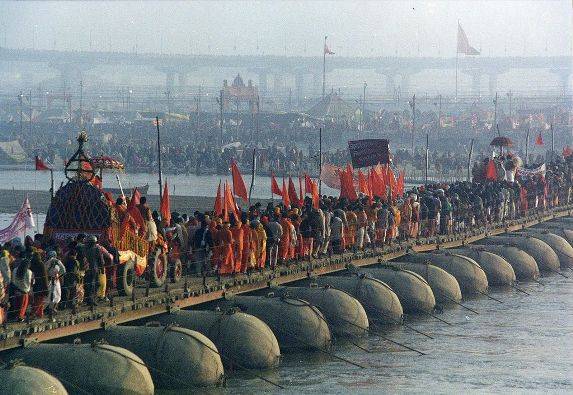KumbhMela, arguably the biggest religious gathering in the world, set to be held in Nashik this year, brings to mind thousands of Babas dipping in the holy waters of Ganga-Godavari, and for the 70s enthusiasts, twins getting lost in childhood and finding each other after 20 years, or heroes singlehandedly saving the city from an epidemic or terrorist attack! These scenarios seem popcorn worthy in the movies to us but are the real sleep depriving possibilities that plague the administration. A gathering of 100 million is after all no joke. The KumbhMela is held every twelfth year in the cities of Haridwar, Nashik, Ujjain and Allahabad. This year beginning on 14th July, its Nashik-Trimbakeshwar or Nashik’s turn to host this gathering for 10 million devotees who await to perform Kumbh rituals spreading across one and a half month.
Though, a global event like Kumbh is all hard work for the police authorities and the administration, with a budget of approximately 500 million allotted this time around for its execution (includes arrangements such as accommodation and public transport), Kumbh is also an opportunity. A social experiment such as ‘Kumbhathon’ is a perfect fit for something like the Kumbha.“It’s a perfect set of problems, the KumbhMela doesn’t last very long, but during that time it stresses the city on all fronts. It forces us to think about fundamental problems, such as sanitation, food distribution and good utilities.” In the midst of IT revolution, technology has seamlessly blended in our lives. The KumbhMela page, WikiNasik, is one such example, where more than 300 volunteers worked to update Nashik’s Wikipedia page, so that outsiders had access to up-to-date and comprehensive information about the city.
Kumbathan, a one of its kind innovation, is spearheaded by Sunil Khandbahale, a Nashik-based innovator who joined hands with the Ramesh Raskar, head of the media lab at Massachusetts Institute of Technology (MIT), and started the KumbhaThon initiative,to use technology in effectively micro managing this mega-religious congregation. They have developed multifarious apps, designed specifically for this event, aimed to effectively curb the problems faced by attendees. For instance, if twins would get lost this time round, they can effectively go to a store keeper who would read their bar-code, given to them at the time of entry, identify them in turn and contact their emergency contact. This app called Milap, is admittedly much less dramatic than stories of families losing themselves in Kumbh and finding each other years later, but is long awaited since roughly Thirty Eight Thousand people go missing every day of the KumbhMela!
Travelling and accommodation problems are being tackled by mobile Apps such as Livenashik, which will gather information and analyse the data on taxis, train and bus schedules, available hostel rooms, hospital beds, ambulances and blood stocks. Another app would use mobile phone location data to help local police redirect pedestrians away from saturated areas; or in case of any outbreaks of diseases among the attendees, Epidemic Tracker would be on a lookout, so as to help medics offer relevant prescriptions and medication. Moving on to the problem of healthy food, an app would go as far as to enable its customers to access information about when and where the food was cooked. Another brilliant aspect of Kumbhathon is the oil reutilization project called ‘Oil Extractor’, which aims to reuse huge amounts oil, donated to temples, that may otherwise get wasted.
Besides the aforementioned features there are also other apps such ‘Shops Online’ for small informal businesses, a bike sharing app, Local Community Radio for information about forthcoming events and emergency situation and many more.
The Kumbathon model aspires to be a global platform and social research organization to help under developed countries function better, and they also aspire to have a billion dollar business turnover.
Their fate rests on this year’s KumbhMela, with festivities just starting, it’s too early to make any conclusive result, but their goal is certainly admirable.
Authored by Aditi Ameria.
Image Source and attribution here, governed by Creative Commons License CC BY 3.0



